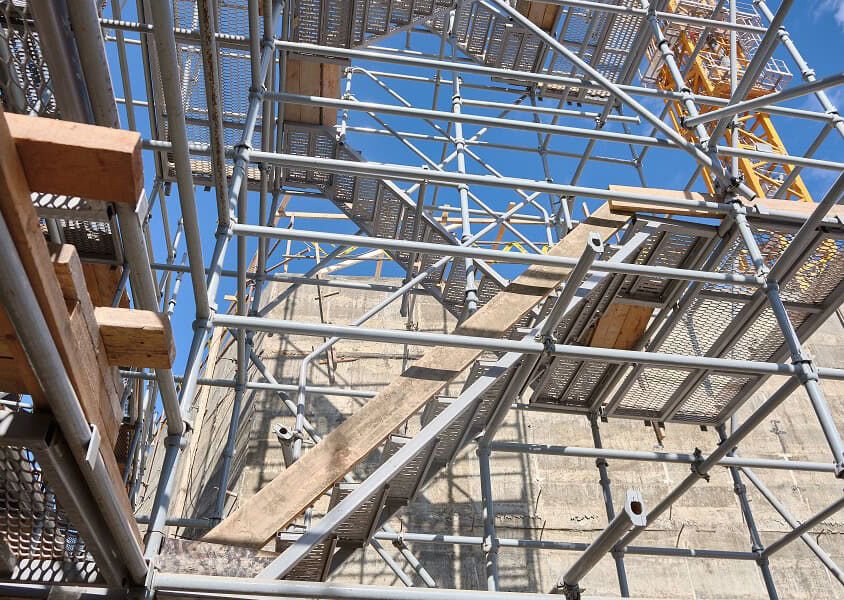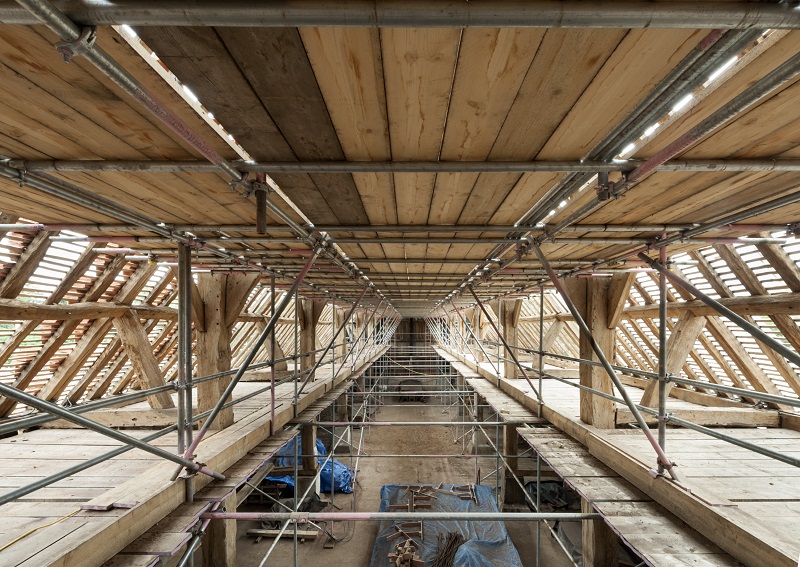Exploring the Different Types of Scaffolding Used in Building And Construction Tasks
The construction industry counts heavily on different types of scaffolding to satisfy certain task needs, each offering distinct advantages and applications. Typical frame scaffolding gives a tough foundation for general jobs, while put on hold scaffolding is important for work on skyscraper frameworks.

Conventional Framework Scaffolding
Conventional structure scaffolding is among the most extensively used methods in the building sector due to its robustness and convenience. This system is composed of horizontal and upright frameworks that are set up to produce a stable system for workers and materials. The main elements include vertical posts, straight journals, and diagonal dental braces, which together give a solid structure that can support considerable lots.
One of the vital benefits of typical frame scaffolding is its versatility to numerous building and construction jobs, ranging from domestic buildings to huge commercial frameworks. The modular layout permits for very easy assembly and disassembly, making it effective for both temporary and long-lasting tasks. In addition, the system can be tailored in elevation and width, suiting different structure styles and site conditions.
Safety is critical in scaffolding applications, and standard framework systems are equipped with guardrails and toe boards to prevent falls and guarantee employee defense. Regular inspections and adherence to security laws are crucial in keeping the honesty of the scaffold (Scaffolding). Generally, standard frame scaffolding stays a basic selection in the building sector, providing a dependable system for labor and boosting general project performance

Suspended Scaffolding
Put on hold scaffolding provides a special service for building and construction jobs that call for access to elevated surfaces, particularly in circumstances where conventional frame scaffolding may be not practical. This kind of scaffolding is generally suspended from the roofing system or upper degrees of a framework, using a system of ropes, platforms, and pulley-blocks to create a working room that can be gotten used to various elevations.
Among the primary benefits of suspended scaffolding is its adaptability. It can be conveniently repositioned or reduced to accommodate modifications in building demands, making it perfect for jobs such as home window setup, frontage job, and maintenance on skyscraper structures. In addition, the very little footprint of put on hold scaffolding enables better use of ground room in city settings, where room is commonly restricted.
Safety is an essential consideration in the usage of put on hold scaffolding. Overall, put on hold scaffolding provides a efficient and efficient solution for accessing hard-to-reach areas in various construction circumstances, boosting both productivity and safety on website.
System Scaffolding
System scaffolding, often considered a modern-day solution in the scaffolding sector, includes pre-engineered elements that can be rapidly assembled and adjusted for various building and construction jobs. Scaffolding. This type of scaffolding is identified by its modular design, which enables versatility and effectiveness on job websites, accommodating structural demands and various heights
Commonly made from high-strength steel or light weight aluminum, system scaffolding offers boosted sturdiness and stability. The parts include upright posts, horizontal journals, and angled dental braces, which adjoin securely, guaranteeing a robust structure. The design often includes standard installations, streamlining assembly and disassembly processes, therefore reducing labor time and expenses.

Rolling Scaffolding
Moving scaffolding is a functional option to standard set scaffolding, created for movement and ease of usage on building websites. This kind of scaffolding includes a system supported by frameworks with wheels, allowing workers to conveniently transfer it as needed. The flexibility function substantially improves efficiency, as it reduces downtime linked with putting together and taking apart taken care of scaffolding.
Normally constructed from light-weight materials such as light weight aluminum or steel, rolling scaffolding supplies a sturdy yet portable remedy for tasks calling for regular repositioning - Scaffolding. It is particularly useful in jobs such as paint, drywall installation, and electrical work, where access to different elevations and locations is needed
Safety is vital in rolling scaffolding design, with attributes index such as securing wheels to protect against unplanned motion when in usage, and guardrails to safeguard workers from drops. In addition, lots of versions are flexible in elevation, suiting numerous project requirements.
Cantilever Scaffolding

The layout home of cantilever scaffolding normally entails using braces or arms secured to a building or framework, enabling the platform to extend outward securely. Security is extremely important; thus, these scaffolds must be crafted to withstand ecological conditions and different tons. Normal evaluation and upkeep are important to guarantee architectural stability and employee safety.
Cantilever scaffolding is favored for its adaptability and efficient usage of room, making it a popular choice in city environments where area restraints are common. It helps with less complicated access to high elevations, eventually adding to the total effectiveness of building tasks. As with all scaffolding types, correct training and adherence to safety requirements are important for employees making use of cantilever scaffolding.
Conclusion
Conventional structure scaffolding supplies stability, while put on hold scaffolding uses adaptability for raised tasks. System scaffolding facilitates fast assembly, and rolling scaffolding enhances mobility for differing work settings.
Conventional framework scaffolding provides a strong foundation for general jobs, while put on hold scaffolding is crucial for work on skyscraper structures.Moving scaffolding is a flexible alternative to typical fixed scaffolding, created for movement and convenience of use on building and construction sites. As with all scaffolding kinds, proper training and adherence to safety and security requirements are critical for workers using cantilever scaffolding.
Traditional framework scaffolding provides stability, while suspended scaffolding offers adaptability for elevated jobs. System scaffolding facilitates fast setting up, and rolling scaffolding enhances movement for differing job settings.